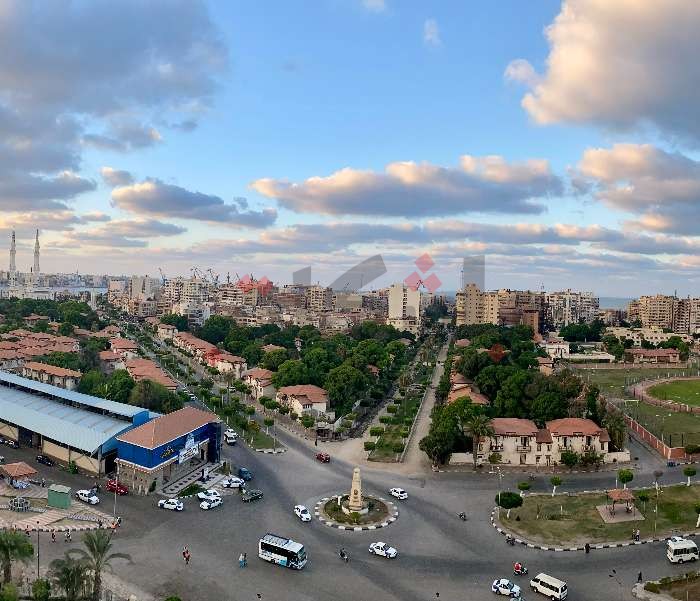If you want to see old French houses, you can read a history book about them, or watch a documentary, or better, you can visit Port Said city and see them with your own eyes.
The houses are distinguished by their simple designs; they’re surrounded by a garden with short white wooden fences, they catch the eyes for their harmonious colours making you dream of being one of their residents one day, and live next to the Suez Canal Authority (SCA) employees who lived in these houses in succession to the French after the nationalisation of the canal.
And just like everything that is beautiful, more than a third of these villas are deserted now; their doors are broken and open to anyone without any supervision or follow-ups.
Searching behind the origins and history of building the SCA Villas, we’ll find that they were built in 1926 by the French, years after opening the Suez Canal; the foreign employees lived there thinking that their ownership of the canal would last them a lifetime and that their stability in Port Said was eternal.
After the late president Gamal Abdulnasser nationalised Suez Canal on 26th of July 1956, he issued a decree allocating the villas to the Egyptians working in the SCA temporarily until their retirement.
The villas are located in two areas, in Port Said, and Port Fouad on the second bank of Suez Canal, all are designed in the European style in the form of a small church with a pyramidal roof.
Each villa consists of two ground floors and a third upper floor. They stand in a row along the street. They were built using red bricks which are distinguished with their durability against salt, they warm the houses in winter and do not absorb the outside heat in summer. You can find the same designs of these villas in the French countryside.
As for the interior design, each villa has a small garden, each garden is different in size from another. The ground floor is connected with the upper floor with a wooden staircase. Each room has two doors, and each door connects each room with the other, giving you a feeling that you’re inside a maze.
There are many architectural properties in Port Said that are considered a wonderful archaeological heritage in their forms and contents. They were listed in accordance with cabinet decree No. 1096 of 2011, regarding the registration of some properties in the records of the architectural heritage of Port Said, which includes 340 buildings in the Sharq neighbourhood, 139 buildings in the city of Port Fouad, 106 buildings in the Arab neighbourhood, and 59 buildings in the Manakh neighbourhood.
The decree prohibits partially or completely demolishing any of these buildings without the approval of the National Grievances Committee. Also, it is not permitted to perform any modifications without the approval of the National Agency for Urban Coordination. This is to preserve the distinguished architectural and historical heritage of Port Said.
Port Said is considered as one of the most expensive places in Egypt in terms of the lands’ prices; the land costs ten folds of whatever establishment will be built on it, yet no one makes good use of those deserted villas; the number of the Suez Canal Authority employees are far less than the villas.
Even after so many years, there is no clear mechanism for using the villas, like turning them to open touristic areas attracting the foreigners who were born and lived there, giving them a chance to visit and reminisce their memories there, or turn them to creative centres for example after doing some renovation and restoration works and heritage preservation.
The question is: where is the Ministry of Culture or the Ministry of Tourism and Antiquities of the National Agency for Urban Coordination? They are responsible for preserving registered architectural monuments, it is their role to follow up on restoration and maintenance works and filling all legal loopholes, and not just inventorying and registering hundreds of buildings as antiquities and heritage and preventing their demolition.
As the city these days is subjected to a wave of development works, no one in Port Said knows the fate of these villas, however, experience indicates that registering them as historic buildings with a distinctive architectural style does not guarantee their protection; yesterday, the Port Said National Museum was demolished to establish a residential building on its land.
Architecture and arts professors and experts classified the city of Port Said as an open architectural museum as it includes a combination of the most wonderful architectural styles of the Mediterranean countries, created by the French, Italian, English and Greek architects; it has a European character in terms of its layout.
According to law, these buildings are protected from demolition, but there is a loophole that allows building owners to file lawsuits challenging their antiquity.
Can law guarantee the survival of our heritage, and stop the changes Port Said is experiencing in its architectural identity?
